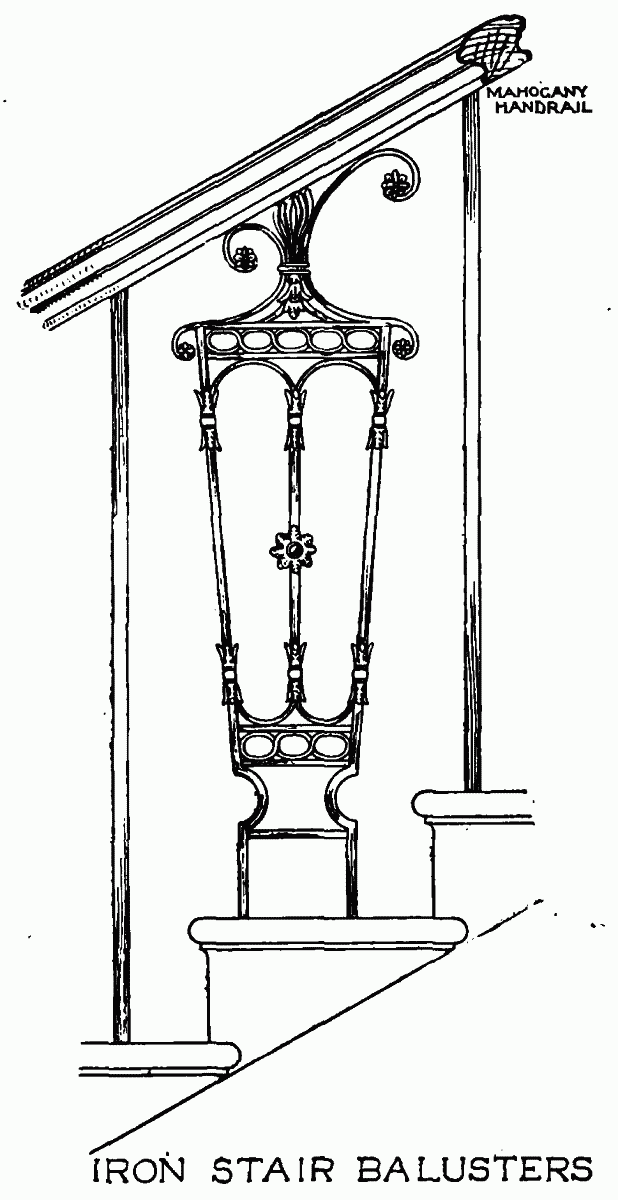Story Of A Chair, or The Attribution Conundrum
It is always exciting, but never an easy task to research or attribute a piece without a known history, however, the study of comparable, better documented pieces, may often be helpful.
Our penchant for hall chairs can be easily guessed by just browsing our stock and blog, so it is needless to say that we instantly fell for this exceptional example:

The piece's striking design and superior quality immediately suggested a noble provenance, as well as the best furniture-makers of the day. Finely crafted in the ‘Antique’ style, undoubtedly influenced by the designs of Charles Heathcote Tatham, this chair was sure to have some aristocratic connection, which we were eager to discover.
The chair bears no maker's marks, typically of English furniture of the time, especially of the commissioned pieces, so we had no choice but look for comparable examples. Our research is still going on, but the first results are already very pleasing: closely related examples were found in the collection of the National Trust at Attingham Hall, Shropshire, catalogued as made by Gillows, and, a further related set, originally supplied to Lord Eldon. All these chairs, including our example, were obviously made to the same design by the same workshop, which, almost certainly was Gillows of Lancaster and London. National Trust in their catalogue refers to 'a pattern designed by Gillows of Lancaster, circa 1790', which we have not yet been able to locate, but this is only a matter of time.

Attingham hall was built to the design of George Steuart in 1785 for the first Lord Berwick (Noel Hill), and incorporates part of the eighteenth century Tern Hall. Alterations were made in 1807 by John Nash, while Repton was responsible for the landscaping of the park land. Gillows of Lancaster and London is known to have supplied furniture and furnishings to the house in 1790's.
Entrance Hall at Attingham Park, Shropshire. The room was designed by George Steuart for Lord Berwick in the late eighteenth century. Photographed in 1921.

Close-up of the hall chairs at the Entrance Hall at Attingham Park, 1921.
Attingham Park hall chair with the crest of the Hills of Hawstone in a painted roundel on the chair back, National Trust

Attingham Park hall chairs in situ these days. National Trust attributes the chairs to the firm of Gillow.
One of a set of eight mahogany hall chairs with a scrolled cresting with rosettes, applied carved arabesques and honeysuckle motifs to the back, with the crest of the Hills of Hawstone in a painted roundel on the chair back, flanked by pilasters on ball base. Solid splayed seat supported on square tapering legs. The chair is of a pattern designed by Gillows of Lancaster, circa 1790. These chairs were almost certainly supplied by the celebrated firm of Gillows of Lancaster and London, which is known to have supplied other furniture and furnishings to the 2nd Baron Berwick (1770-1832). National Trust.
Closely related chairs supplied to John Scott, 1st Earl of Eldon (1751-1838), Lord High Chancellor of England in 1801-1806 and 1807-1827,

John Scott (1751–1838), 1st Earl of Eldon, Lord High Chancellor of England (1801–1827) by William C. Owen. His influence in the Cabinet was supreme, and he was, in all but name, prime minister of England.
The chairs have the foliate-carved scrolled crestings above the crest, inscribed Sit Sine Labe Decus (Let honour be without stain), the motto of the Earls of Eldon. The chairs were most likely commissioned for Lord Eldon's newly acquired in 1798 townhouse at 6, Bedford Square, later Eldon House. Recently sold by Christies, 20 May 2014, New York, lot 102.

Eldon House, at 6, Bedford Square, was purchased in 1798 from Alexander Wedderburn (1733-1805), 1st Earl of Rosslyn, Baron Loughborough, and Lord Chancellor of Great Britain in 1793-1801, whom Lord Eldon succeeded on this position.
In 1788 Lord Eldon was appointed solicitor-general, and was knighted. He conducted the vigorous prosecutions against British sympathisers with French Republicanism, and became for the time the best hated man in England. In 1799 he became Lord Chief Justice, and in 1801 he was appointed Lord Chancellor. Lord Eldon continued in office as Chancellor under Pitt (1804–1806), and on the formation of the Portland administration in 1807, resumed the Great Seal, which he retained for twenty years. In 1821, Lord Eldon was created Viscount Encombe and Earl of Eldon. He died in London on 13th January, 1838.

A design for wrought iron stair balusters at Eldon House, 6 Bedford Square, where the chairs most likely were originally placed.
Our example shares its design with the Earl of Eldon's chairs, and closely relates to the Attingham Park chairs.
Crafted of rich mahogany, the chair boasts the sleek, elegant lines and precise construction, adorned by foliate-carved scroll cresting above the square panelled back, above the square solid seat raised on tapered and moulded front legs terminating in turned feet, and finely splayed sabre back supports.
The piece's superb quality, choice of timber and sophisticated decoration suggest the best furniture-makers of the era, which supports the attribution.
This exceptional and important chair is for sale here.






























